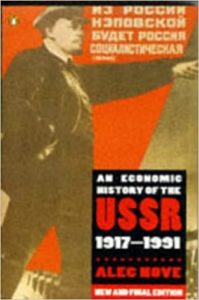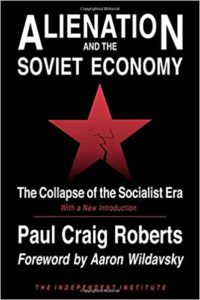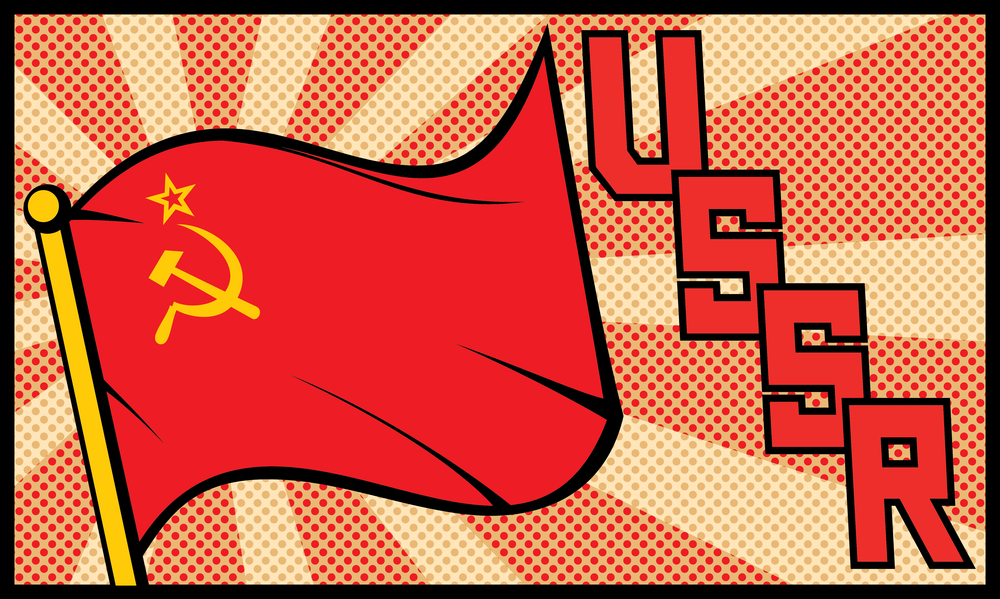In my previous post, I listed the first five of my twenty-five recommended books on the Soviet experience. That list focused specifically on the Russian Revolution. Today, my selections explore the Soviet economy.
The Soviet Economy
The classic account of Soviet economic history is found in Alec Nove’s An Economic History of the USSR (originally published in 1969). It is almost impossible to imagine embarking on a study of the Soviet economy without beginning with Nove’s account.

Yet, when I talk to my graduate students I often distinguish between “what” questions, and “why” questions. My point to them is that the answer to “what happened” is just a critical first step; they must be able to answer “why what happened, happened.” The “why nexus” is the domain of theory, and it is theory that provides the interpretative lens. Because of this simple point, I would argue the most important book to frame how you understand the operation of the Soviet economic system is Paul Craig Roberts’s Alienation and the Soviet Economy (originally published in 1971).
In this book, Roberts explains in detail the original aspirations of the Communist experiment, its utter failure, and the evolution of the system as it struggled to operate over the subsequent decades. In developing this analysis, Roberts pioneered the analysis of the Soviet economic system as a polycentric order, and in so doing opened the door for the analysis of not only the official Soviet economic system, but the unofficial network of economic relationships that enabled the system to quasi-operate.

There are two parts to Roberts’s narrative – part 1: the utter unworkability of pure communism; part 2: the evolution of the economic system after the abandonment of the experiment with pure communism. For a fuller economic history of this first part, Silvana Malle’s The Economic Organization of War Communism, 1918-1921 (originally published in 1985) is unmatched. This is a comprehensive exploration of the ideological motivations as well as the practical considerations that combined to dictate the policy implementation during the immediate aftermath of the Bolshevik Revolution, and the consequences of those policies, as by 1921 the Russian economy was reduced to ruins. Boris Brutzkus’s internal contemporary account in Economic Planning in Soviet Russia (originally published in Russian in 1924, but in English translation in 1935) would be the other book that I would recommend on this period.
For a fascinating discussion of the unofficial operation of the Soviet economy during the Stalin and immediate post-Stalin era, my favorite work of economics from the “thaw generation” of scholars is David Granick’s The Red Executive (originally published in 1961) where based on his work in the 1950s and field research after Stalin’s death, he is able to capture the disjoint between the official description of Soviet managerial practice, and the reality of Soviet managerial practice. Extra plan activity permeates the entire system, side deals as well as self dealing are rampant. The system was centralized in name, but quasi-decentralized in practice. This work, along with Paul Craig Roberts and others on corruption and bias in the pricing system led to later work focusing on the Soviet system as a rent-seeking system from a public choice perspective. But it is in the recognition that “blat was higher than Stalin” as an operating system in the Soviet economy that paved the way for that work, and it was Granick’s work that made that operating principle clear to all who were seeking to understand how this economic system operated.
In my next post, I’ll have five more recommendations, this time on the reality of Soviet life.
Peter J. Boettke is University Professor of Economics & Philosophy, George Mason University, Fairfax, VA 22030.
As an Amazon Associate, Econlib earns from qualifying purchases.


READER COMMENTS
Philo
May 30 2020 at 12:24pm
“The system was centralized in name, but quasi-decentralized in practice.” Isn’t this true of all centralized systems that deal with a large number of people?
Peter Boettke
May 30 2020 at 9:03pm
The implication that command and control is conceptually incoherent might have some rather profound implications.
Comments are closed.